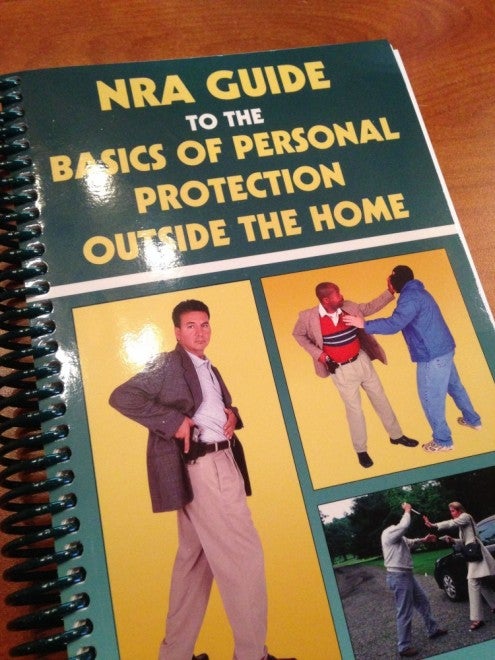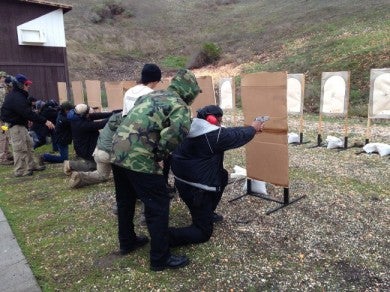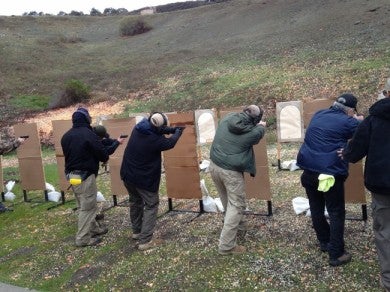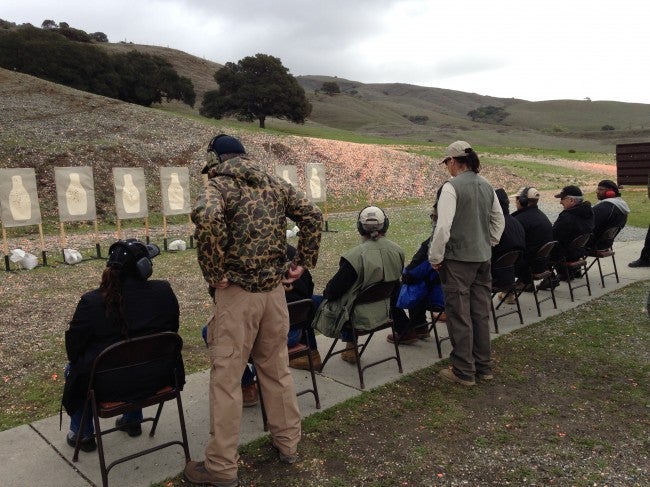I’m a huge proponent of being a student for life. No matter how young or old you may be, there’s always plenty to learn. Even if you’ve already studied content, things change and it’s always a good idea to get a refresher.
I recently took the NRA’s Personal Protection Outside the Home class which is a 16-hour course reviewing the ethical, legal, and tactical considerations for using a firearm outside the home. I took it through a local training outfit called Defensive Accuracy, which is also who I trained through for my NRA Instructor Certification.
We learned the considerations one needs to ponder when deciding to carry and use a firearm outside the home. What is the defensive mindset, and how do you train for a potential deadly encounter? How do you avoid confrontations in the first place? What mode of carry is best for your particular situation?
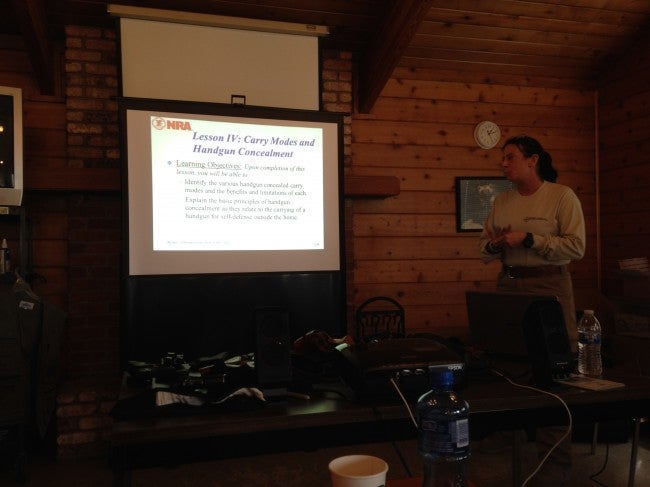
There was plenty of classroom discussion to review the concealed carry considerations.
When I posted about attending the course on social media, a commenter replied, “shoot first, ask questions later.” This is absolutely the worst advice. Are you willing to get arrested, have your gun confiscated, and potentially mistreated in the media? In the classroom we had a very lively discussion about people who used firearms in self-defense, but who went to jail for negligence. For instance, there was a mini-mart owner who used his firearm in self-defense at work. However, the bad guy was face down and not moving, and the owner went behind the counter to retrieve a second firearm and sent five more shots into his back. The coroner said the bad guy was still alive until the second volley of shots. The store owner, the initial victim, got sent to life in prison.
For the most part, you can’t use deadly force unless there is an imminent danger. Once that danger is no longer imminent, deadly force is often unjustified. However, the law varies state by state, and even varies by city. In some states, you have a duty to retreat where in others you can stand your ground. It’s very important to understand the law where you are carrying, whether it be in your home city or while traveling.
Focusing in on the hands on training component, drawing from concealment presents some unique challenges that are not present in bench shooting. We learned how it can be helpful to put some sort of weight in your concealment garment pockets which will help you sweep the garment away when presenting your firearm. Having a good retention holster is also really important. The last thing you want is for your gun to fall out of your conceal carry holster in public and cause potential alarm.
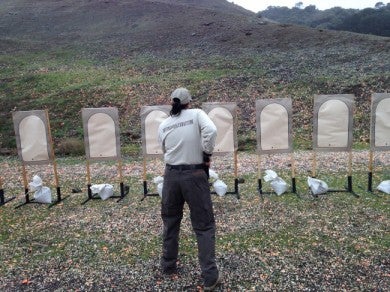
Instructor Denise King demonstrates the proper steps to safely present a firearm from a holster. We first started the process without a concealment garment. Once the steps were taught, the instructors then increased the difficulty by having students perform the presentation with a concealment garment.
One thing I really enjoyed learning was shooting from the hip. With my competition background, I am always shooting from either an isosceles or Weaver stance with my arms fully extended. When shooting for personal protection, it is helpful to practice shooting the moment the muzzle is clear of the holster and rotated 90 degrees toward your target. At 3 yards, shooting from the hip was not very hard for me, and it didn’t seem very hard for the other shooters. Obviously, it is something one should practice.
Lastly, the type of gear is a key consideration. What kind of clothes do you generally wear, and will they adequately conceal your firearm? If it’s hot or cold where you will carry, do you have the right clothes for every environment you’ll face? Do you prefer a leather holster, or is kydex or a belly band more your style? If you’re like the thousands of Americans who conceal carry, you’ll most likely end up with a big bin of holsters that you’ve tried out. In my opinion, trying different conceal carry methods is really the only way you’ll find out what you like. As is no surprise, this can be expensive. But what kind of price are you going to put on your life?
For anyone looking to additional training on carrying a firearm outside the home, the NRA’s Personal Protection Outside the Home course is a gold standard. I highly recommend the course to anyone who wants to take personal responsibility for their own safety outside the home.
 Your Privacy Choices
Your Privacy Choices
